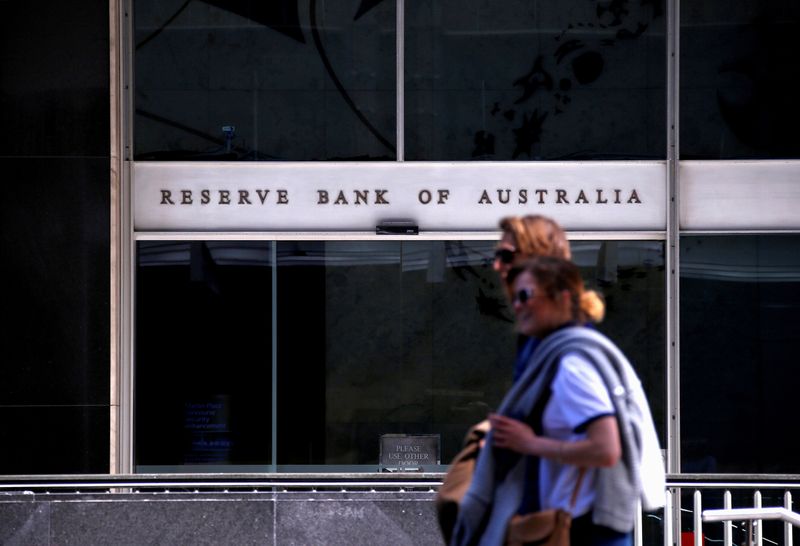By Wayne Cole
SYDNEY (Reuters) - Australia's central bank on Friday lost all control of the yield target key to its stimulus policy as bonds suffered their biggest shellacking in decades and markets howled for rate hikes as soon as April.
An already torrid week for debt got even worse when the Reserve Bank of Australia (RBA) again declined to defend its 0.1% target for the key April 2024 bond, even though its yield was all the way up at 0.58%.
Scenting capitulation, speculators sent the yield sky-rocketing to 0.75% while yields on three-year bonds recorded their biggest monthly increase since 1994.
All eyes were now on the RBA's policy meeting on Nov.2 where investors were wagering it would call time on yield curve control (YCC) and its guidance of no rate rises until 2024.
"The only conclusion we can draw is that the YCC regime is about to be formally dumped at next week’s meeting," said Ben Jarman, a rate strategist at JPMorgan (NYSE:JPM).
"If so this is a startling about-face," he added. "Dropping YCC is a strong signal, so we bring forward our expectation for the first hike from late 2023 to Q4, 2022."
Markets are already well ahead of him with futures pricing in a hike in the 0.1% cash rate to 0.25% as early as April, while swaps have rates above 1% by year-end.
Yields on three-year bonds surged to their highest since mid-2019 at 1.25%, bringing the rise for the week to a portfolio punishing 47 basis points. For the month, yields were up an astonishing 90 basis points likely leaving many investors deeply underwater.
GONE TOO FAR
Most analysts argue the market has got ahead of itself on hikes given annual wage growth in Australia of 1.7% is still far below the RBA's desired level of 3% or more.
While core inflation data this week surprised on the high side at 2.1%, that is still only just in the RBA's target band of 2-3% having been under it for almost six years. To average 2.5%, it would need to run above 3% for an equal period.
A Reuters poll of analysts found the median expectation was for a hike in the second quarter of 2023, though the risk was clearly for an earlier move.
Calling for a hike at all might seem odd given the economy almost certainly contracted sharply in the third quarter as coronavirus restrictions shut Sydney and Melbourne.
However, the country's success in vaccinations has seen the lockdowns relaxed and consumer spending pick up. Data out Friday showed retail sales rebounded 1.3% in September after three months of steep losses, handily beating forecasts.
The job market has also proved resilient, leading analysts to predict an economic rebound this quarter.
"With the economy now recovering again we believe that the conditions for the start of rate hikes will now be in place by late 2022," said Shane Oliver, chief economist at AMP (OTC:AMLTF) Capital, who sees rates at 0.5% by the end of next year.
"While this will mean an increase in consumer and housing interest rates, the overall level of the cash rate will still be incredibly low and will be far from tight monetary conditions."
The RBA is hardly alone in being at odds with increasingly aggressive market pricing for early tightening.

The European Central Bank on Thursday tried to push back against market hawks but with scant success, as bond yields jumped across the continent.
Many central banks are conceding that global inflationary pressures look likely to be more lasting than first thought, given supply bottlenecks and surging energy prices.